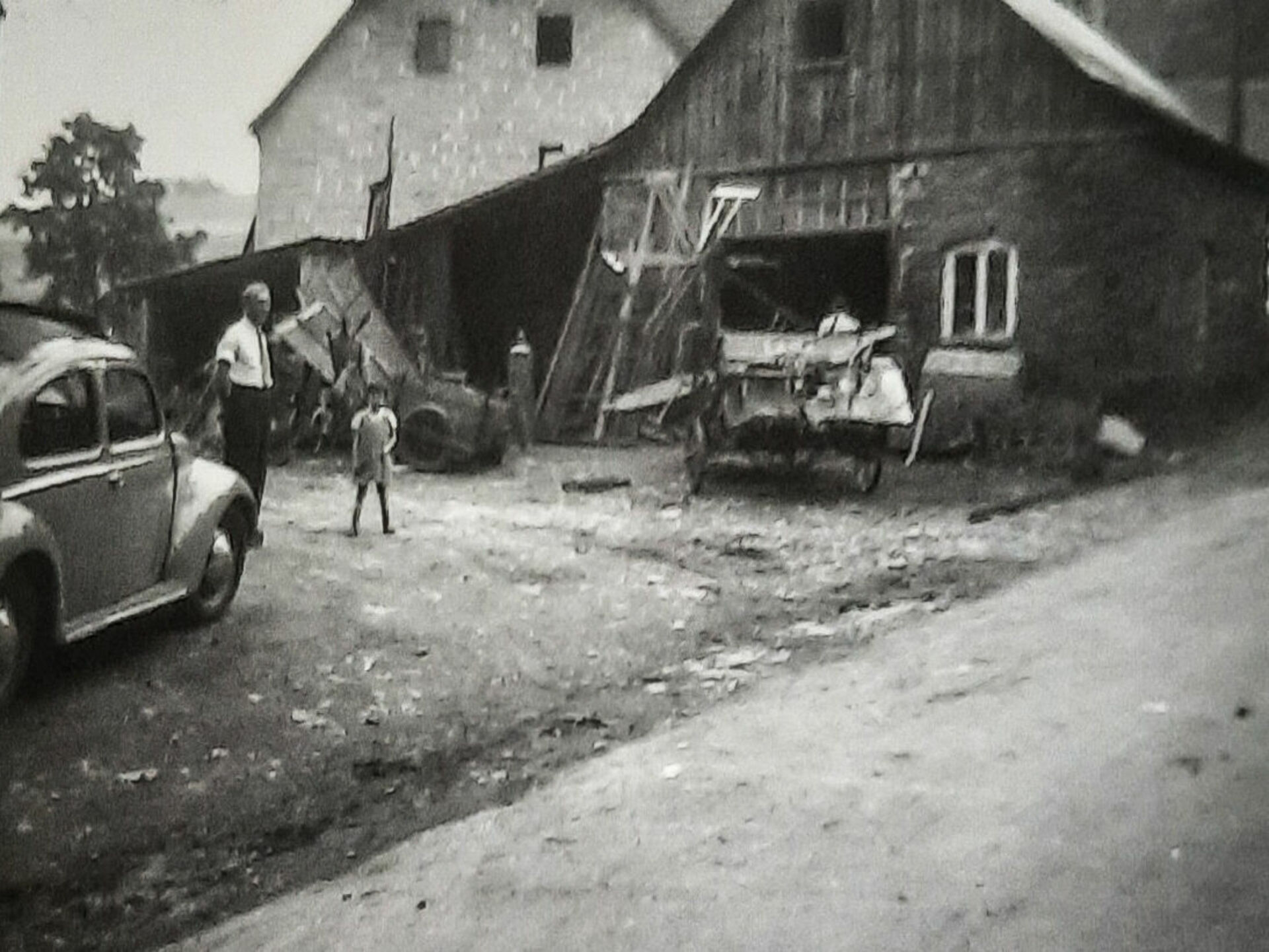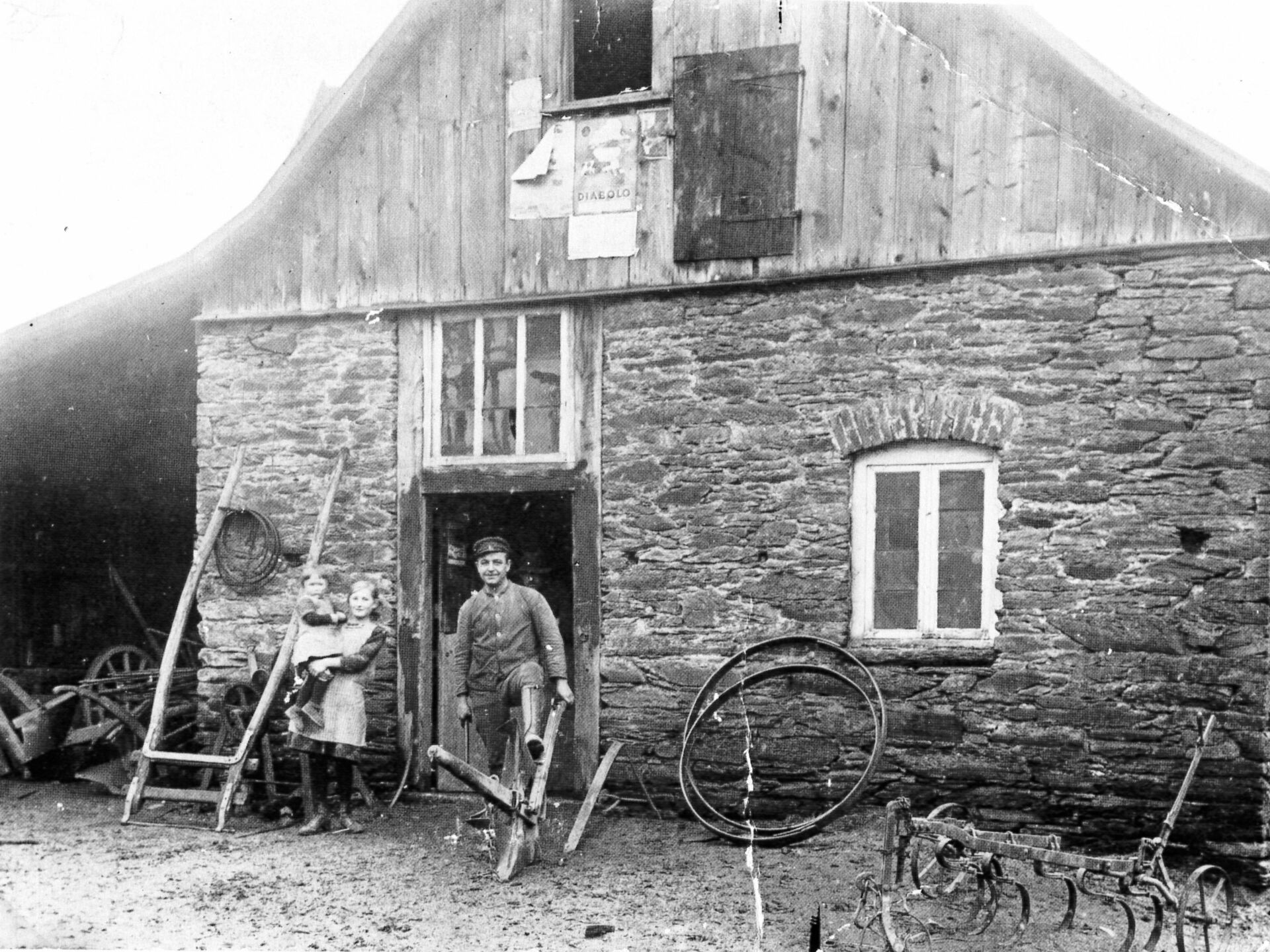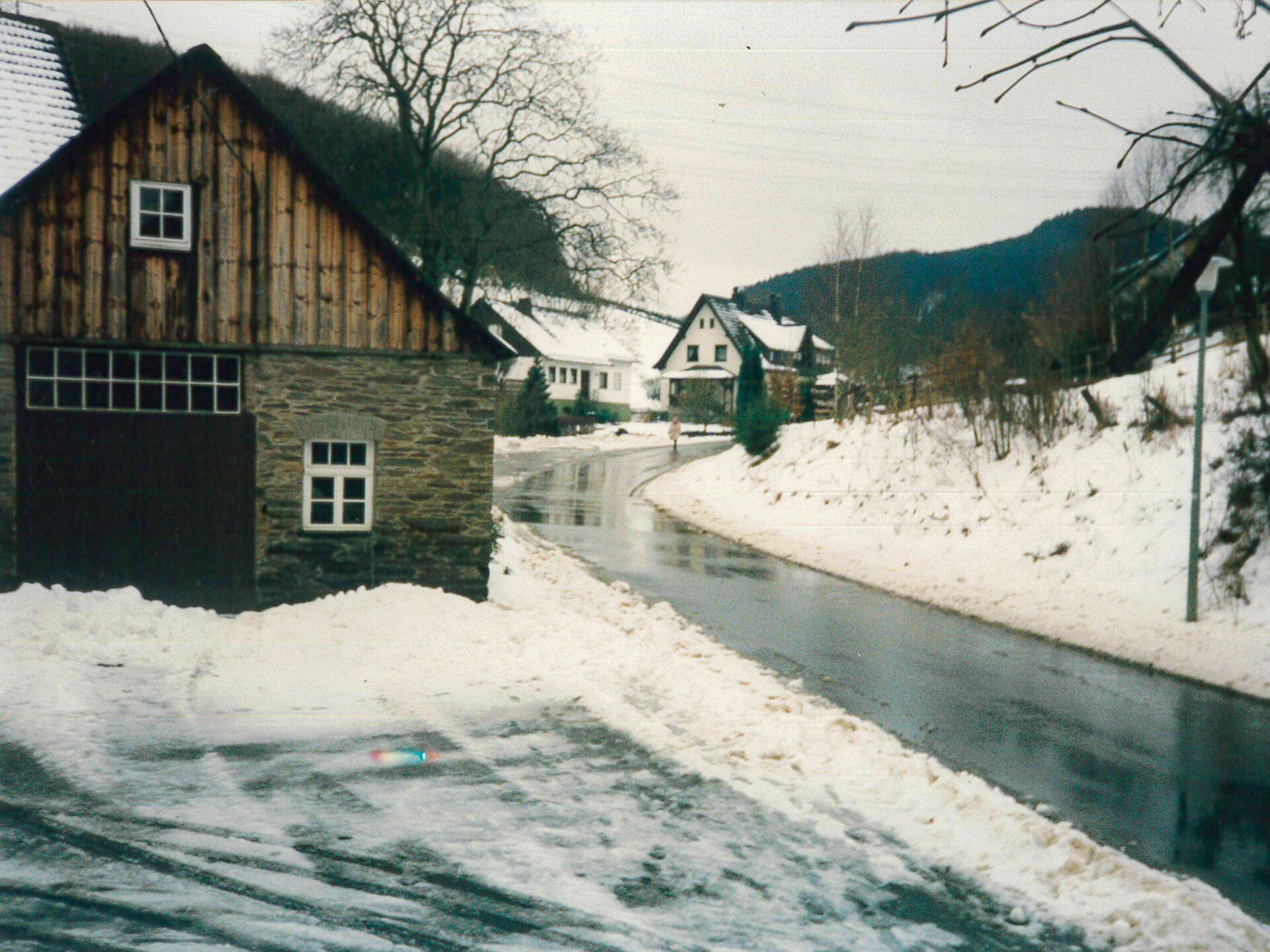Old village smithy Kückelheim
Family business with hammer and anvil
In the uniform townscape of Kückelheim a small building stands out: The gray natural stone walls of the old forge stand out rustic from the surrounding white houses. At first glance, you would never guess that the blacksmith's hammer was still being swung here until the 1960s when horses had to be shod or wagon wheels repaired. With the decline of carriages and coaches, the village blacksmith's service was no longer worthwhile, and you have to look inside the little house itself to get an idea of its history.
It seems surprising that Anton Eickelmann decided to build a new forge in 1860 or 1863 (not exactly known): At this time, industrial metalworking had already gained a foothold; one of the first machine-operated hammers was located just five kilometers away. But the Eickelmanns kept up the family tradition for another 100 years, producing tools and wagon wheels and supplying horses with horseshoes.
The last tenant even offered to repair agricultural equipment after the Second World War. Material was scarce, and repairing was worthwhile. In 1962, the blacksmith's time was over. In 2001, the small house was listed as a historical monument and subsequently renovated, because "the barely altered building still vividly documents the working and production conditions of this special craft business."
The former smithy has a floor area of approx. 45 m2, the walls are made of quarry stone. The gabled roof was covered with sheet metal until the renovation in 2002, the gables are still made of wood. The front side of the building with the large double-leaf entrance gate faces the residential building, one eaves side faces the street. A photo from 1925 originally shows a horizontally divided single-leaf wooden entrance door with a door-wide, square fanlight. In the 1950s, the door was already in its current state, and a door in the gable had also been removed in the meantime. The windows on the front and street side hint at the former curved segmental arches and initially had cast-iron frames, which were replaced by wood. Inside, the original fireplace and chimney have been preserved. The shape of the wooden extension corresponds to the former open wooden shelter; the roller shutter door has been added.
The Kückelheim village smithy was a family business in which the trade was passed down from father to son. When the builder Anton Eickelmann died unexpectedly in 1879, his widow Theresia placed a newspaper advertisement looking for a temporary tenant, offering him board and lodging. She mentioned that the smithy was well equipped and had a lot of public traffic. Her son Franz Joseph later took over the business. Another blacksmith is said to have worked there during his time, so things were going well. Hubert Eickelmann, the 8th child of Franz Joseph and Louise, was the next in the dynasty. He was killed as a soldier in the Second World War. Erich Warmbrunn then leased the workshop as the last village blacksmith and even trained an apprentice.
The current owners are descendants of the Eickelmann family. They use the former smithy privately. By prior arrangement and on special occasions, guests can also take a look inside.
Vertelleken
Chatting out of the sewing box...
Family traditions can contain a piece of unique history. As children, the cousins of the current owner used to play "Warmbrunn and Otto" in the smithy. It was important to shout: "Otto, grab it!". That's what village blacksmith Erich Warmbruch used to say to his apprentice Otto Schönfelder.








